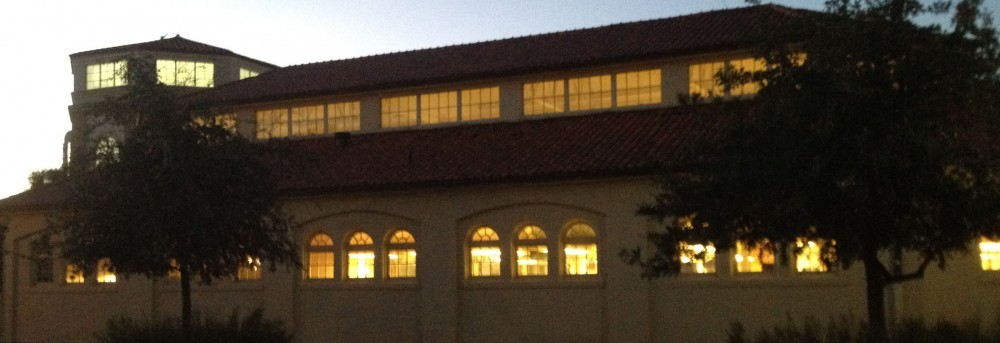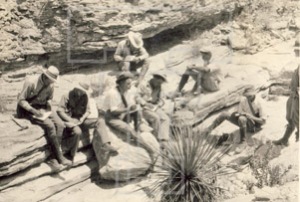(originally posted June 3, 2011)
The inspiration for this week’s “Notes from the University Archives” came about while rooting through early papers from the President’s records from the 1920s-1940s. A bit of correspondence between President Bradford Knapp and Leroy T. Patton discussing the basis for a student’s grade caught my eye. Patton suggested the following scale, stating that it was as close as he could recall from previous experience:
An A Student is one who has mastered the subject and has made it a part of his mental equipment to such as extent that he can use it independently.
An B Student is one who knows the subject, can answer most of the question upon it, but has not made it so thoroughly a part of his mental equipment that he can use it independently to any large extent.
An C Student has mastered a fair amount of the subject, but cannot make independent use of it.
An D Student has obtained some value from the subject, but comparatively little.
An F Student is one who has obtained practically nothing from the study of the subject.
Who was this man behind this definition of a student grade scale?
Leroy Thompson Patton began as a professor of geology at Texas Technological College in 1925, the first year Texas Technological College opened. Before that, he had served as professor and department head of chemistry and geology at Musingum College and associate geologist with the Bureau of Economic Geology at the University of Texas, as well as having served as a high school principal and superintendent of schools in Ohio. Patton was also a member of Sigma Xi, a graduate science research society.
Patton, learning of the new college that was opening up in West Texas, contacted the new president, Dr. Paul Whitfield Horn in the hopes of obtaining a new position. “At the time I applied for a job Dr. Horn hadn’t planned to have a geology department. I had to sell him on a geology department and on myself,” he reflected in 1950 as he prepared to retire the following year. As there were not enough students to fill a geology position full-time, Patton agreed to also teach chemistry. “Incidentally, I never have taught chemistry,” he proudly boasted.
The very limited number of buildings on the new campus proved to be a challenge for many who started teaching at Texas Tech. Patton’s office was shared with biology professor Dr. Richard Studhalter, his classroom space was in the Administration Building, his labs in the Home Economics and Textile Engineering Buildings, and additionally he also coached boxing in the mule barn.
Not one to rest on his laurels, Patton worked hard to publish in his field and a Geological Society of Texas Technological College was established which later petitioned Sigma Gamma Epsilon to become a chapter in 1931. Geology courses were popular, having 281 students enrolled by fall of 1931 and 296 in the fall of 1932.
Patton also began to conduct a field course in geology for his students starting in 1927. The goal was to give his students field experience before they graduated. A wonderful little scrapbook resides in the Archives from the first field trip to New Mexico from June 7-July 14, 1927. Among the places they visited were the Guadalupe Mountains, the New Mexico Military Institute at Roswell, Ruidoso, Lincoln National Forest, San Andres Canyon, and White Sands.
To view this collection, please visit the Southwest Collection/Special Collections Library on the Texas Tech University campus. Richard Studhalter later formed a similar student group, called the Biology Club, in 1937 which also went on field trips and his collection can also be found in the University Archives.
Written by: Lynn Whitfield





